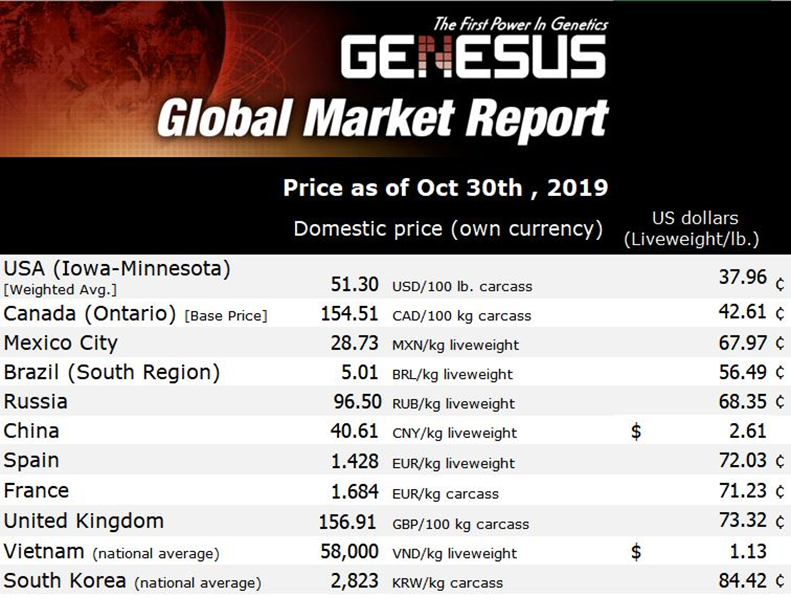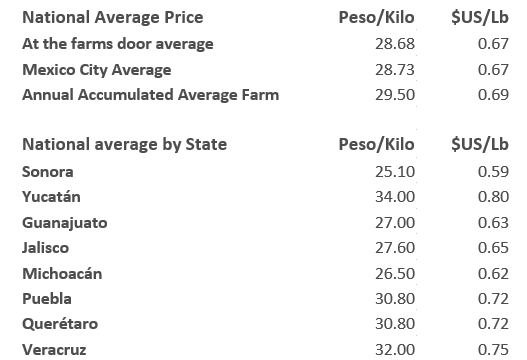



Genesus Global Market Report: Mexico - October 2019
Last week we attended the National Swine Congress of Mexico in Puerto Vallarta, which had a large attendance and a variety of exhibitors, both in the commercial area and at the conference auditorium.
With relatively stable prices during this year, the main fear of Mexican producers is the possibility that the African swine fever permeates the country's borders. Many of the presentations were dedicated to this topic. In this regard, Secretary Villalobos said that from the Mexico’s Secretary of Agriculture and Rural Development they are aware of the health concerns that threaten the industry, by reporting that all the resources are available to protect it. The second topic was the one referring to international markets, especially the one that has to do with China.
While recently Mexico’s Secretary of Agriculture and Rural Development, Víctor Villalobos Arámbula estimates a 5.7 percent growth in the national swine industry with respect to the million 501,000 tons of pork produced in 2018, we heard at the conference a constant claim about a domestic shortage of pork, mainly due to the presence of diseases (PRRS, PED) devastating some pig areas in Mexico.
The second effect of Mexico’s reduced pork availability has been the tariff war with the United States. Mexico is the largest pork importer country from the US with chilled bone-in hams and shoulders primals which account for the largest share of the overall cutout. Up until May, these products faced a 20 percent tariff in the Mexican market. After tariffs were lifted the Mexican importers are still trying to recover to pre-tariff levels.
Consolidation is happening in the Northwest part of the country lead mainly by the two major swine groups located there. Several of the sow barn’s owners we knew from the past have migrated to an integrated system, just like Keken did in Yucatan, to join the two biggest groups as a grow-finishing production.
The market weight continues to rise, averaging 130 kg. in some States. So, basically there is not reduction on number of sows, but consolidation. The trend continues due mainly to the successful of the Yucatan’s model.








